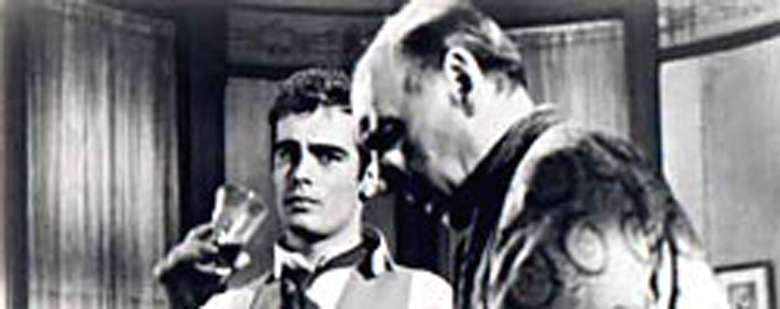Reviews
Sidney Lumet
USA, 1962
Credits
Review by Marlin Tyree
Posted on 11 July 2004
Source Republic Pictures Home Video VHS
The terrible truth of A Long Day’s Journey Into Night is that it was written long before Eugene O’Neill sat down to translate the pain and anguish of his own family into the fallen Tyrone household. No playwright could have imagined such a turbulent mosaic of individual strife alongside alternating collective longing and personal disengagement. The Tyrones, like many families near the turn of the century America, were the epitome of the dysfunctional family before the term was coined by modern psychiatry. But what distinguishes O’Neill’s play from ordinary melodrama is his acute sensitivity to the strengths and frailties of the human character, his appreciation of and ability to lift everyday language from the mundane to the sublimely lyric and his profound sense of beauty. All of this is captured and even heightened in Sidney Lumet’s adaptation of O’Neill’s dramatic masterpiece.
O’Neill received The Pulitzer Prize (posthumously) for the play after the original Broadway production in 1957 (O’Neill stipulated in his will that the play not be produced until 20 years after his death). Early critics of Lumet’s version complained that the production appeared “stagy” and “deliberate”. Watching the four principle leads; Katherine Hepburn, Sir Ralph Richardson, Jason Robards and Dean Stockwell (who all received awards at Cannes for their contributions) reveals that nothing could be further from the truth. This stellar cast rehearsed for a week before any shooting began and their performances appear powerful, fresh and completely spontaneous. In fact, the film is almost entirely dependent on the actor’s performances — and this is where Lumet’s genius lies. Without the dexterity of Lumet’s longtime collaborator and cinematographer, Boris Kaufman, who is so unobtrusive that the camera literally becomes a character in the drama, we could never fully appreciate the depth and range of the performers nor the characters as written. That, of course, is the greatest service any director can provide a playwright and is also why Lumet’s version is still regarded as the definitive film version of O’Neill’s play.
The film, like the play, is primarily told from O’Neill’s — in this case — Edmund Tyrone’s (the youngest son) perspective. He is a promising writer and although suffering from tuberculosis, he is the center of the film and the hope of the Tyrone household. The film takes us through the harrowing day on which Edmund and his family receive the official prognosis from the family doctor on his condition. Set in and around a New England summer home during New York Theater’s off-season, the theatrical family (both James, the father, and his son, Jamie are current Broadway regulars) is apparently spending their holiday denying Edmund’s debilitating illness and the resurgence of the mother’s (Mary) drug addiction. As the film progresses we learn that each of the family members, lthough brought together by Edmund’s illness, are gradually retreating into their own worlds and that their inability to peacefully cohabitate stems from an inability to move on from events long passed.
Essentially, no one character is able to function successfully alone. Alcoholism, drug abuse, chronic unemployment, wanderlust and trenchant denial mechanisms are second nature to the members of the Tyrone household. Underlying all of this is the reoccurring theme of guilt deriving from their Irish Catholic heritage. Yet all of these people are talented, intelligent and highly self-expressive individuals, which makes watching their behavior immensely compelling though they never indulge in maudlin sentimentality. In fact, there’s a hardness in their world-weariness that provides startling humor in many of their observations and gives their perspectives a buoyancy that only the best writers of classic tragedy are able to convey. Wisely, O’Neill keeps the trappings of their depravity offstage (although their social drinking is most conspicuous), which leaves us to witness the repercussions of how their choices have affected their relationships and most tragically, how their relationships have informed their choices.
The acting, as mentioned, is uniformly excellent. With no exaggeration this ensemble is certainly one of the best ever captured on film. Andre Previn’s score is spare and haunting, reflecting the bitter sorrow and sense of waste expressed by all of the Tyrones except Edmund, who it seems, has the most to loose. Though, like his kin, tragically, he feels he has little to offer the world, himself: “The makings of a poet? No, I’m like the guy who’s always panhandling for a smoke: he hasn’t even got the makings, he’s only got the habit.” If perspective is, indeed, hereditary, A Long Day’s Journey Into Night is a shining document to that fact; a fact, that is, of supreme irony.
We don’t do comments anymore, but you may contact us here or find us on Twitter or Facebook.



